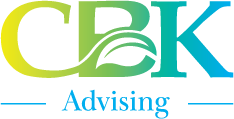Fall Cleaning: The Ultimate Guide to Detoxing Company Culture Boosting Employee Happiness


As the temperatures cool and the leaves begin to change, there’s a sense of renewal in the air, making it the perfect time to clean up toxic work cultures and create a safe and healthy environment. As always, CBK Advising is committed to providing Nutter’s Nuggets of wisdom offering practical coaching on creating happier, healthier, more productive relationships within companies.
Unmasking Toxic Work Cultures: The Startling Impact on Mental Health and the Path to a Healthier Workplace
With the change season almost upon us, let’s talk about the real scary truth: toxic work cultures. Recent polls by the American Psychological Association are alarming. 19% of workers believe their workplace is at least somewhat toxic. Additionally, employees in toxic work environments are three times more likely to experience harm to their mental health compared to those in healthier work environments. This finding highlights the importance of promoting psychological health and well-being in the workplace, as emphasized by the U.S. Surgeon General’s Framework for Workplace Mental Health and Well-Being. The Framework lays out five essentials for promoting workplace mental health and well-being, including protection from harm, connection and community, work-life harmony, mattering at work, and opportunity for growth. While the APA Work in America Survey 2023 found that psychological well-being is a high priority for workers, with 92% of workers saying it is important to work for an organization that values their emotional and psychological well-being and provides support for employee mental health [2], improvements are still needed. For example, 55% of workers agree that their employer thinks their workplace environment is a lot mentally healthier than it is, and 77% of workers report experiencing work-related stress in the last month. Furthermore, only 43% of workers reported that their employer offers health insurance with coverage for mental health and substance use disorders.
The Hidden Dangers of Toxic Work Cultures: Recognizing the Signs and Protecting Employee Well-being
A toxic work culture is characterized by a negative and unhealthy work environment that can cause harm to employees’ mental and physical health. Signs of a toxic work culture include high levels of stress, low morale, lack of communication, poor leadership, discrimination, and harassment. Employees may feel unsupported, undervalued, and unappreciated in such an environment, which can lead to burnout, anxiety, depression, and other mental health issues. This can have a significant impact on their personal lives, as they may struggle to maintain a healthy work-life balance and experience difficulties in their personal relationships. They may also experience physical symptoms such as headaches, fatigue, and sleep problems. Additionally, a toxic work culture can negatively impact employee productivity, job satisfaction, and overall well-being. Therefore, it is important for organizations to prioritize promoting a healthy work culture that supports the mental and physical health of their employees.
Fostering a Thriving Work Culture: The Power of Psychological Safety and Open Communication
An encouraging work culture is essential for organizations and their employees to prosper. Creating a psychologically secure environment, where team members can trust openly communicating their feelings and opinions. Open inclusive companies are more successful. Motivated, effective employees usually state they feel respected and supported. The result is improved work performance and enhanced job satisfaction. It is vital for business leaders to prioritize their employees’ well-being and cultivate a culture that encourages development, teamwork, and creativity. In Karen Nutter’s book “Finding Contentment in a Chaotic World”, Karen offers insights as an executive business coach to provide pragmatic approaches for finding and maintaining calm satisfaction. By executing these strategies, people can improve their mental health and health, which can have a positive influence on their work setting. Competently handling demanding scenarios cultivates inner peace. This can help us stay attentive and resilient during hardships and contribute to a more collaborative and encouraging team spirit.
7 tips HR Managers should recognize as signs of workplace toxicity:
- Pay attention to employee response: Inspire employees to communicate their ideas and issues about the work setting. Perform regular polls or focus groups to collect feedback on areas for betterment.
- Monitor employee behavior: Observe changes in employee behavior, such as increased absenteeism, decreased productivity, or increased conflicts among team members to pinpoint areas for betterment.
- Examine trends: Detect regularities in employee grievances or disputes that may suggest a broader issue within the company.
- Focus on employee turnover: High churn rates may be a sign of a toxic work culture, as staff may be resigning due to ineffective management, absence of assistance, or other issues.
- Examine protocols: Access company policies to assure they are impartial, unbiased, and accommodating of employee wellness.
- Tackle disagreements immediately: Confront clashes and problematic conduct as soon as they occur to avoid them from increasing leading to additional harm to the professional atmosphere.
- Offer instruction and assistance: Offer coaching and help to managers and staff on subjects such as dispute resolution, interpersonal skills, and coping with stress to foster a more productive work environment.
By identifying the signals of workplace hostility at the onset, HR leaders and managers can take preemptive measures to tackle these difficulties and create a beneficial and accommodating work culture for their employees.
Maximizing Work Culture Efficiency: The Role of Employee Surveys and Managerial Follow-Up in Driving Growth and Satisfaction
Carrying out routine employee surveys and follow-up with managers is essential for sustaining a healthy and efficient work culture. Staff surveys should be short, periodic polls that enable companies to gather reactions from employees; these surveys, HR leaders and managers can detect opportunities for growth, tackle issues before they intensify, and make fact-based decisions to improve company culture. Surveys can also aid companies by monitoring staff involvement and gratification over time, which is important for attracting and retaining high-performing staff.
Other than surveys, CBK Advising can facilitate a town hall meeting with no management so input from employees is kept anonymous. CBK Advising will report over-arching themes to the issues without naming employees.
The Power of Progress Updates: Boosting Job Satisfaction and Performance through Consistent Employee Check-Ins
Regular progress updates play a vital role in fostering a positive work environment. Consistent follow-ups offer supervisors the opportunity to discuss staff members’ goals, concerns, and growth, enabling employees to contribute feedback and receive assistance when necessary. This support can lead to employees feeling valued and supported, thereby improving their overall job satisfaction and performance levels.
Moreover, conducting frequent surveys can help management identify potential obstacles early on, such as team conflicts or burnout. By being proactive, leaders can take preventive actions to address these challenges and maintain a harmonious workplace.
Building Emotional Security at Work: Fostering Trust and Open Communication for Enhanced Team Success and Satisfaction
How do we establish an atmosphere of emotional security in the workplace? The first step is to create a culture where staff can honestly communicate without fear of punishment. Management should encourage employee communication by actively hearing their opinion and providing productive feedback. In turn, leaders should also openly communicate their mistakes or shortcomings, leaning on their team for support. This open, honest dialogue fosters trust. Teams with established trust are more likely to admit when they need help, offer creative solutions, and are more invested in the team. A cohesive team offers better solutions while enhancing satisfaction levels. Creating a positive helpful work culture is a platform for both individual and group success.
In addition to listening, companies need to offer actual help to their employees. This can include offering additional education and training, promoting work life balance, and access to mental health services. Remember investing in employees is investing in your business. Employees that feel valued and well cared for are loyal, reducing turnover rates while improving product and protecting your bottom line.
The Crucial Role of HR in Cultivating Healthy Workplaces: Addressing Concerns and Collaborating with Management for a Safe and Supportive Environment
Recent years have highlighted the need for healthy, safe workplaces. Human Resources (HR) leadership plays a critical role in maintaining an active pulse point on the health of company culture. Their vital role outlines and applies internal reporting and handles any disciplinary actions. In conjunction with leadership HR can address and regulate any concerns of mistreatment, inequity, or security. HR acts as a middleman in areas of conflict, allowing staff to report any issues discreetly without fear. By providing regular feedback, HR can alert management of any areas of particular concern that seem repetitive. With HR and Management, working cohesively they can create a healthier atmosphere.
Empowering Employees through HR: Implementing Incident Reporting Systems and Training for a Trustworthy and Accountable Workplace Culture
Additionally, HR can help implement internal incident reporting systems that allow employees to report incidents anonymously and without fear of retaliation. These systems can help identify patterns of behavior or issues within the organization that need to be addressed. HR can also provide training and support to team leaders on how to manage incidents effectively and respond to employee concerns. Together, HR and team leaders can create a culture of candor, faith, and responsibility where all employees thrive.
As leaders, it is imperative we recognize the impact a negative environment has on both individuals and organizations. Being proactive, listening, and taking productive action to work with Human Resources and employees to ensure psychological safety and wellbeing is an investment in our communities as well as our businesses.
Unlocking Employee Potential: Fostering Self-Worth and Confidence through Growth Opportunities, Recognition, and Supportive Work Environments
One key aspect of Karen and Katie’s approach is an underscoring of the value of an employee’s self-worth. Encouraging staff boosts self-esteem. Ways to positively bolster staff confidence includes opportunities for growth, acknowledging effort, offering earned praise, and offering genuine assistance. A work environment that embraces these ideals creates an atmosphere that encourages confidence and taking personal responsibility.
Fostering Personal Accountability: Preventing Toxic Work Environments through Transparent Leadership and Mutual Responsibility
Another aspect of preventing toxic wasteland at work is encouraging personal accountability. When leaders can be vulnerable admitting their mistakes, they encourage their employees to do the same. An unhealthy culture includes unfair blaming, passing the buck, and fault finding. A transparent culture based on personal accountability prevents these negative attributes.
Establishing Healthy Boundaries: Enhancing Company Culture through Clear Expectations and Consistent Guidelines for Effective Decision-Making
Boundaries are another critical element in ensuring the health and safety of your company culture. Boundaries provide clear expectations about what is and is not acceptable, these guidelines prevent bitterness, complacency, and procrastination. Consistent application of the rules promotes effective decision making and proactive action.
Clean Up Toxic Work Culture Today: How CBK Advising and their Scientific Assessments Can Help You Hire the Right People
Now is the time to clear the clutter from the toxic work culture, so you can hire the right people for the job, the first time. High turnover rates are one of the most pronounced symptoms of a much-needed environmental overhaul. A secondary symptom is the inability to hire the right people. Quality staff can spot an unhealthy workplace when they see one. This is where the critical value of the team at CBK Advising, and their expertise in organizational development with the application of the scientific assessments can make a world of difference. Through their expert guidance, learning the valuable resources of the assessments allows you easily identify the strengths and weaknesses of potential and existing employees, empowering you to effectively determine the best fit for the role. Partner with CBK Advising to create a workplace that fuels its employees through productive encouragement and success.
CBK Advising: Empowering Employees and Organizations through Emotional Intelligence and Expert Guidance
Assessments can play a crucial role in cleaning up and preventing toxic workplace culture. Through CBK’s Advising’s expert guidance you can create an employee centered culture that boosts confidence, accountability, and structure where both employees and the organization thrive. By utilizing assessments, organizations can identify areas of improvement and take steps to address any toxic elements in their workplace environment. For more information on how CBK can assist you and your organization visit https://cbkadvising.com/ or call us at (904) 323-2WIN(2946).

